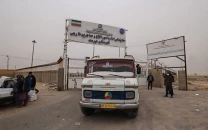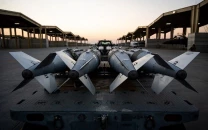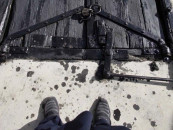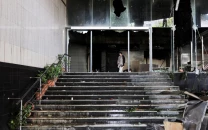Bomb planted months in advance to kill Ismail Haniyeh in Tehran: NYT
Three Iranian officials described the breach as a catastrophic failure of intelligence and security, embarrassing IRGC

A bomb that killed Hamas chief Ismail Haniyeh in Tehran was planted months in advance, according to a report by The New York Times published on Thursday.
The explosive device was reportedly smuggled into a guesthouse in Tehran two months prior to the assassination. The guesthouse, known as Neshat, is located in a prestigious area of northern Tehran and is operated by Iran’s Islamic Revolutionary Guards Corps (IRGC).
According to seven Middle Eastern officials, including two Iranians and an American official, Haniyeh was killed by an explosive device placed in the guesthouse.
He was in Tehran to attend the inauguration of Iran's new president when the bomb was remotely detonated, confirmed five of the Middle Eastern officials. The explosion also killed one of Haniyeh's bodyguards.
Haniyeh, who headed Hamas's political bureau while residing in Qatar, frequently stayed at the Neshat guesthouse while visiting Tehran. Sources revealed that the assassination was meticulously planned and executed over several months, requiring extensive surveillance of the compound.
Iranian and Hamas officials have accused Israel of orchestrating the assassination, an assessment echoed by several US officials who wished to remain anonymous. Though Israel has not publicly claimed responsibility for the attack, Israeli intelligence reportedly briefed the US and other Western governments about the operation shortly after it occurred.
In the immediate aftermath of the assassination, speculation swirled that Haniyeh was killed by a missile strike, similar to the attack on a military base in Isfahan in April. Such theories led to questions about how Israeli forces might have evaded Iranian air defences to conduct an airstrike within Tehran.
Instead, the attack revealed vulnerabilities in Iran’s security apparatus, as the bomb was hidden within a supposedly secure compound and remained undetected for weeks.
Three Iranian officials described the breach as a catastrophic failure of intelligence and security, embarrassing the IRGC, which frequently uses the compound for secret meetings and as a residence for prominent guests.
The Iranian state news agency, Tasnim, quoted eyewitnesses saying that something resembling a missile struck Haniyeh's room window, resulting in the blast.
Two Iranian officials, speaking on condition of anonymity, confirmed that the IRGC had briefed them about the attack, stating that the explosion occurred inside Haniyeh's room.
They suggested that the explosive device was planted well in advance and that the operation resembled the remote-controlled AI robotic weaponry tactics Israel employed in the 2020 assassination of Iranian nuclear scientist Mohsen Fakhrizadeh.
The New York Times reported that Israel's Mossad is believed to have been behind the attack.
Mossad Chief David Barnea stated in January that his agency's resources were dedicated to targeting Hamas leadership. "I will take my time, but wherever they are, our hands will reach them," Barnea said.



















COMMENTS
Comments are moderated and generally will be posted if they are on-topic and not abusive.
For more information, please see our Comments FAQ